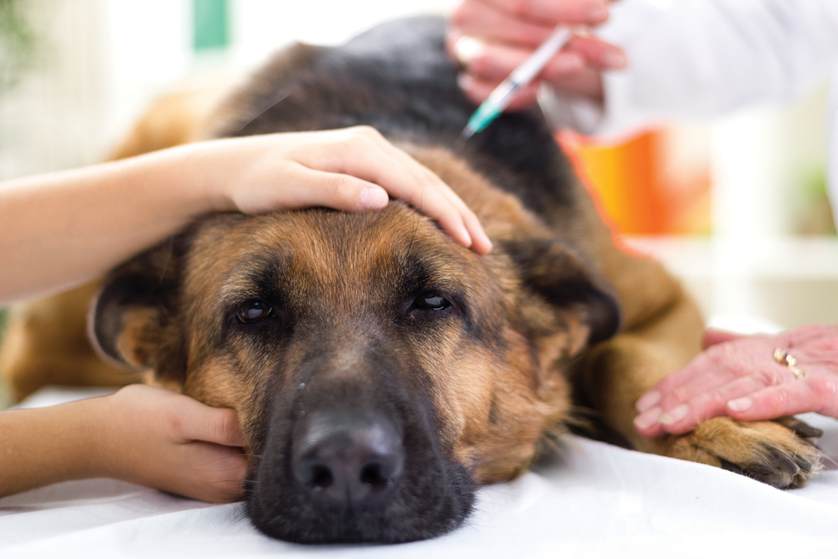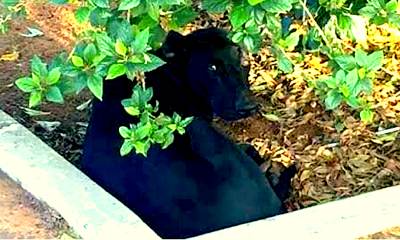Animals
7 Worrisome Dog Flu Symptoms Every Pet Owner Should Know, But Doesn’t
- 684shares
- Share On Facebook
The United States is suffering from a severe outbreak of influenza.
Doctor’s offices, clinics and hospitals are filled to overflowing with the sounds of retching, sneezing, coughing and moans and groans.
Over 100 people have died every week since mid-December, says the Center for Disease Control, and between October 7 and December 23rd there were 759 deaths attributed to the flu.
This is not the worst outbreak in our country’s history, but the numbers are climbing quickly. And, it’s not just humans that are coming down with the flu.

Canine influenza is making its way across the country. The only thing dog owners can do is be cautious and be prepared.
Remember, it’s not just one part of the country that’s affected; dogs in every state are at risk of coming down with the flu.
K-9 influenza is extremely contagious and symptoms can range from very mild to severe; here are 7 that every dog owner should know!
#1- Coughing: A persistent cough is one of the earliest signs of dog flu.
A cough can be either wet-sounding or dry and sound like your dog is unsuccessfully trying to hack up a hairball.
#2 – Sneezing: The occasional sneeze due to allergies or sniffing something especially disagreeable isn’t cause for concern, but a day full of sporadic sneezing points toward illness.
Try to note what your dog was doing directly before he sneezed to help determine if it’s flu-related.
If he was in the kitchen when you were using pepper, probably not cause for alarm. But several seemingly random sneezes could indeed be flu symptoms.
#3 – Nasal Discharge: Often, nasal discharge is a result of sneezing, but when it’s the flu, the discharge will be constant—not only just after a big sneeze.

Clear discharge is usually harmless and is mostly related to allergies.
Mucus that is cloudy, gray, green, or especially thick is a sign the body is fighting a more serious illness. See your vet as soon as possible!
#4 – Eye Discharge: For some breeds and some dogs, daily eye discharge is normal.
If that’s the case for your pup, look for a noticeable increase in how often you have to clean their eyes and the amount of discharge you’re removing.
Dog flu-related eye mucus is thicker and goopier than the everyday glob you easily wipe away.

#5 – Reduced Appetite: If your dog is usually a hearty eater but then suddenly stops showing interest in food, something isn’t right.
Occasionally refusing a treat or not finishing their dinner could be a simple stomach ache, but going 24 hours with little or no food means it’s time to call the vet.
#6 – Lethargy: Some dogs are admitted couch potatoes. But too much sleeping, especially for a normally active animal could mean your dog’s body is being worn down by the flu.
Look out for a noticeable decrease in activity and a general lack of interest in the games and activities they usually enjoy.

#7 – Fever: The normal temperature for a dog is between 101 and 102.5 degrees Fahrenheit.
Minor cases of the flu can cause slight spikes in temperature, while more serious instances can push the thermometer to dangerous heights.
Animal Planet advises that a temperature of 104 or higher points to either dog flu or another kind of serious canine illness.
There is a flu vaccine available for dogs. Ask your vet if it’s a good idea for your pet.

Be vigilant in looking for symptoms! If you notice at least two of the symptoms on this list, experts recommend scheduling an exam with your regular veterinarian ASAP.
Dog flu is rarely fatal but in extreme cases, dogs can develop hemorrhagic pneumonia which can cause severe issues, some long-term and debilitating.
Veterinarians usually prescribe cough suppressants and antibiotics to help dogs with mild cases, and Pet MD says the flu usually runs its course in 10-15 days.
For the severe form of dog flu, however, the dog will need fluids, antibiotics, and other support treatments the veterinarian finds necessary.

They’ll also require several weeks of rest and isolation.
Please, if there’s any chance your pet could have caught the doggie flu, don’t take him outside your house except to go to the vet. And don’t sit in the waiting room with him.
Tell the receptionist you suspect the flu and you’ll wait with him outside.
Do your part in getting this epidemic under control!
Source: I Heart Dogs
- 684shares
- Share On Facebook





















